Comparo: 2014 Fiat 500L versus Mini Cooper Countryman
Story by John LeBlanc
Between the birth of our country and today, the percentage of people living in rural instead of urban settings has reversed, with now more than 80% of Canadians being city dwellers. So if you’re in the majority of Canadian families living in a city, it only makes sense to consider a city friendly-family vehicle.
Two of the best examples are the new-for-2014 Fiat 500L and Mini Cooper Countryman. Both are so-called urban SUVs offering just a bit more room and design panache than run-of-the-mill small cars. So we asked: which one is the better urban family vehicle?
First Place: 2014 Fiat 500L
Following in BMW’s Mini brand’s footsteps with the addition of its larger Cooper Countryman, the front-wheel-drive 500L is literally an expansion of the Fiat 500 city car range. Compared to the existing two-door 2+2 500 coupe, the front-wheel-drive L offers two more doors and a 42% larger cabin for five passengers.
Fiat knows it can’t charge as much as the more established Mini brand. So the 500L’s $21,690 (all prices include freight and pre-delivery inspection fees) starting price looks good compared to the Mini’s $27,095 cost. Even our well-equipped $29,460 500L Sport tester (including options like a six-speed dual-clutch automatic transmission, massive sunroof, upgraded audio and voice-activated navigation) is less than a comparably equipped $31,585 Countryman.
Both the Mini and Fiat urban SUVs offer three-across rear seating. They also offer sliding rear benches that allow you to customize the passenger/cargo space. But in reality, a duet of passengers will be more comfortable than a trio in either of these small hatches. If you need room for baby strollers or whatnot, note that the 500L offers 655 litres of cargo room behind its rear seats compared to only 467 in the Countryman.
Objectively, the Fiat’s more powerful (160 horsepower and 184 pound-feet of torque versus the Mini’s 121/114 ratings) turbocharged 1.4-litre four-cylinder gas engine beats the Mini’s naturally aspirated 1.6L four handily. The 500L and Countryman share similar fuel economy estimates (8.7/ 8.1 L/100 km city; 6.0/6.6 highway, respectively). Yet the Fiat takes only 9.3 seconds to go from zero to 100 kilometres an hour — 2.3 seconds quicker than the surprisingly slow Countryman.
Subjectively, though, the way the Fiat goes about its business may offend keener urban drivers. Unlike the Countryman (where more money can buy you more power), the 500L only comes with the lone powerplant. While it puts up good numbers, the Fiat turbo-four is not very refined in doing so. You need to get the revs well past 2,500 rpm for any kind of forward movement. And the slow-shifting dual-clutch autobox (supposedly to be replaced by a conventional torque-convertor unit this year) is not a good match to the engine. Plus, the 500L’s handling and steering is nowhere near as sharp or crisp as the Countryman.
That said, we think the majority of buyers in this segment looking for a stylish four-door hatch will be happy with the extra room and value found in the 2014 Fiat 500L.
Second Place: 2013 Mini Cooper Countryman
At the Mini Cooper Countryman’s launch event in 2010 Mini’s head designer at the time, Gert Hilldebrand, said the idea of a larger Mini was something the BMW brand struggled with. But demand from existing Mini customers — those with children or extra stuff to carry around or who can only afford one car — essentially forced the Countryman onto the market.
By chasing a different type of customer than the smaller, two-door models, the Countryman isn’t so, well, “mini.” Although it’s minimal overhangs means it’s still shorter than a typical compact five-door hatchback, the Mini Countryman is almost 150 mm longer than the stretched Mini Clubman. More significantly, the Countryman’s wheelbase has been stretched and the cabin is noticeably wider.
Compared to the Countryman, however, the 500L offers a better view of your urban surroundings from the driver’s seat. Combined with the optional tall-roof design and slim pillars, outward visibility is much better in the Fiat than in the Mini. We also found the Fiat’s interior controls and overall layout easier to figure out than the more gimmicky design of the Mini. The 500L’s central touchscreen display (that houses the majority of the infotainment features) is much simpler to use than the Countryman’s fiddly and scattered controls.
While the Fiat will beat the big Mini in a straight-line, when it comes time to turn a corner, the Countryman will reward the urban driving enthusiast. Despite its obvious gains in size and weight, for the most part, the Countryman delivers the same so-called “go-kart handling” the smaller, lower and lighter Minis achieve.
And compared to the 500L’s helm, the Countryman’s steering is very direct, meaty and accurate. The Countryman’s raised seating, taller body, wheels and tires, improves the ride quality over its smaller Minis siblings, yet it’s still relatively stiff compared to the more supple-riding Fiat.
For buyers who don’t mind digging deeper into their wallets or being beaten at stop lights by a Toyota Prius, the Mini Cooper Countryman is still very appealing to urban buyers looking for a small, fun-to-drive, five-door hatchback with the brand cachet and good residual values and luxury features that are part and parcel with the Mini badge.





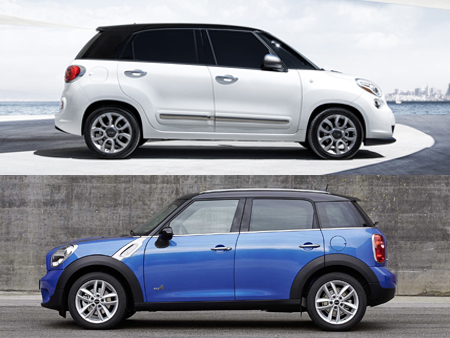
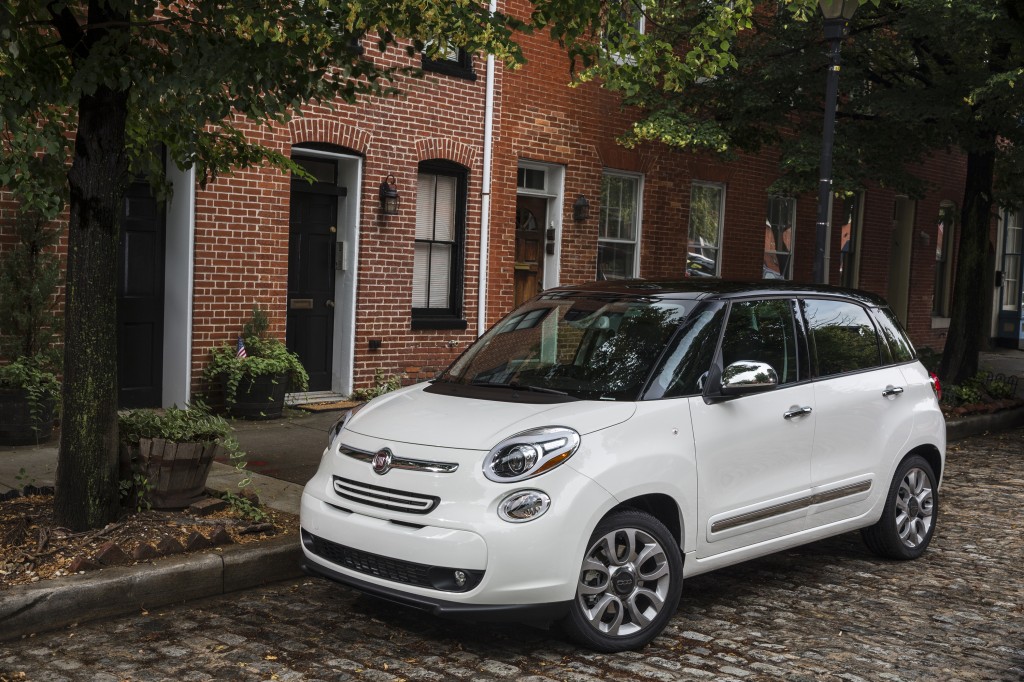
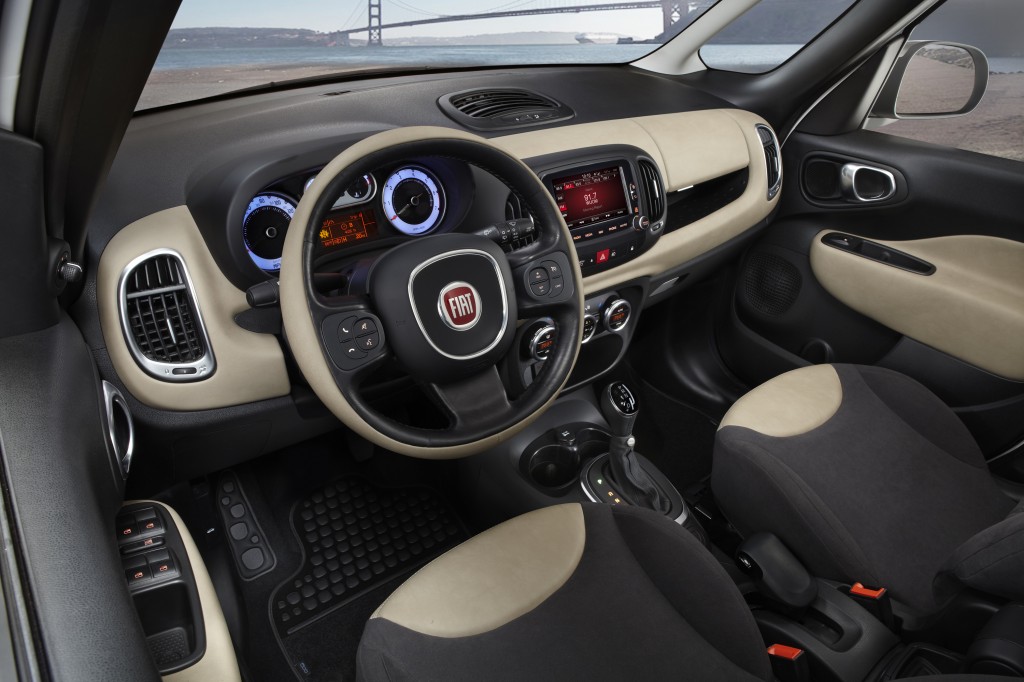
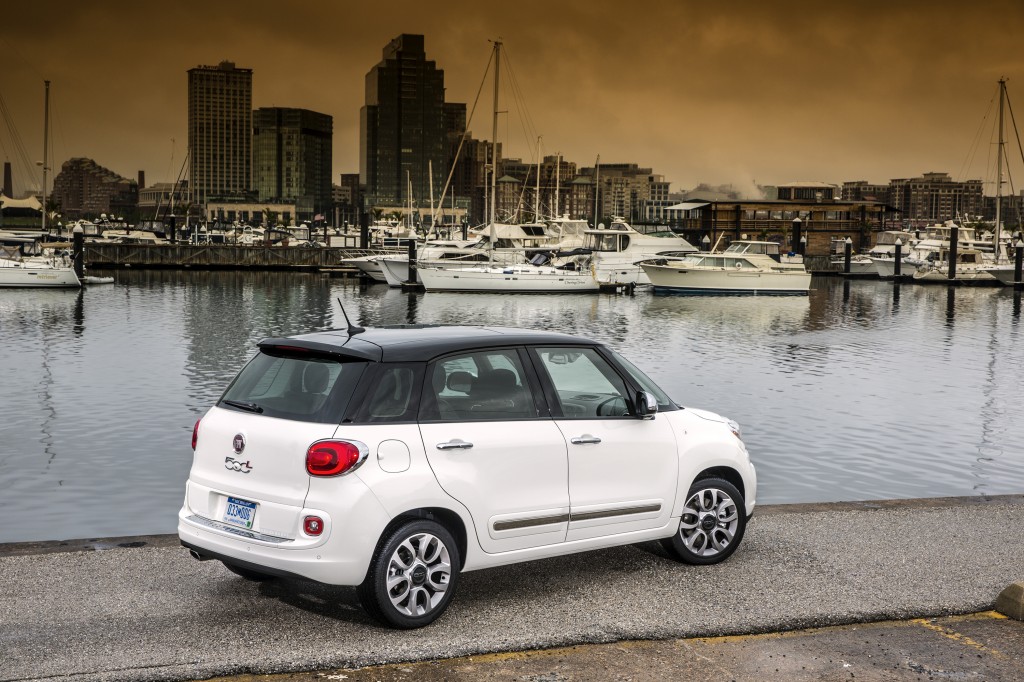
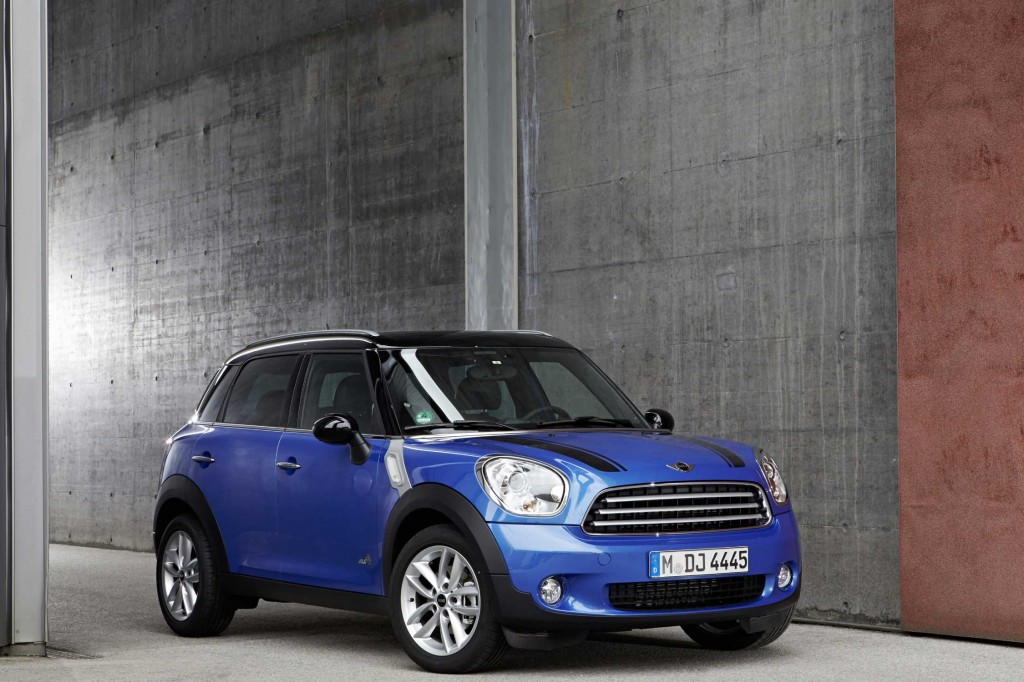
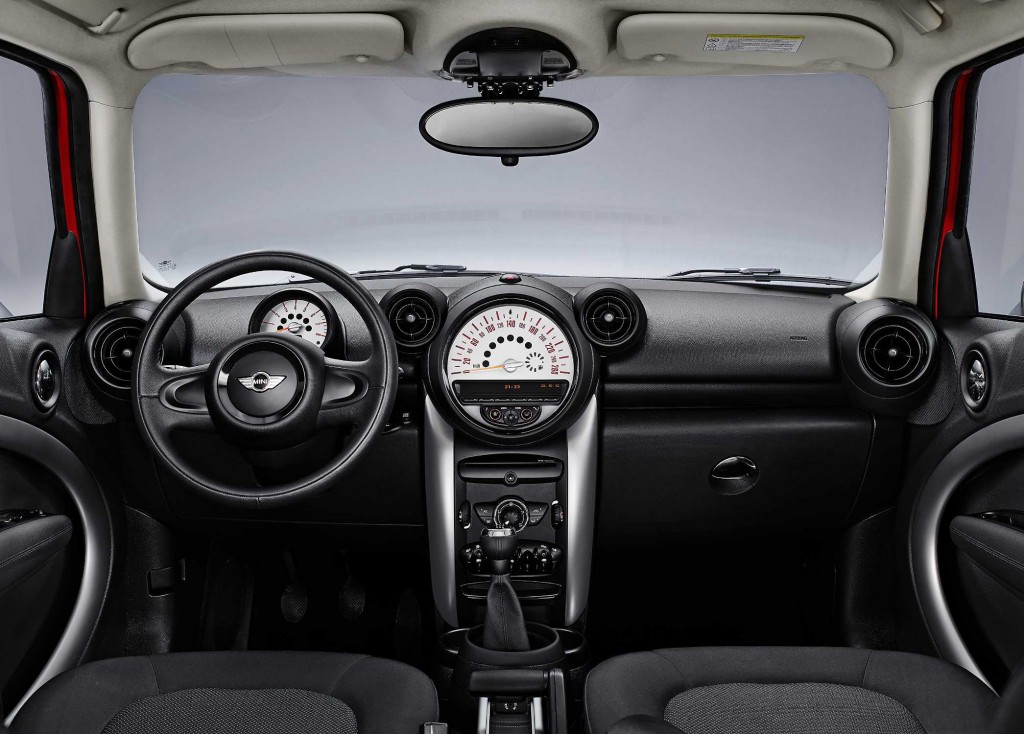

![[del.icio.us]](https://www.straight-six.com/wp-content/plugins/bookmarkify/delicious.png)
![[Digg]](https://www.straight-six.com/wp-content/plugins/bookmarkify/digg.png)
![[Facebook]](https://www.straight-six.com/wp-content/plugins/bookmarkify/facebook.png)
![[Google]](https://www.straight-six.com/wp-content/plugins/bookmarkify/google.png)
![[Reddit]](https://www.straight-six.com/wp-content/plugins/bookmarkify/reddit.png)
![[StumbleUpon]](https://www.straight-six.com/wp-content/plugins/bookmarkify/stumbleupon.png)
![[Twitter]](https://www.straight-six.com/wp-content/plugins/bookmarkify/twitter.png)
![[Email]](https://www.straight-six.com/wp-content/plugins/bookmarkify/email.png)